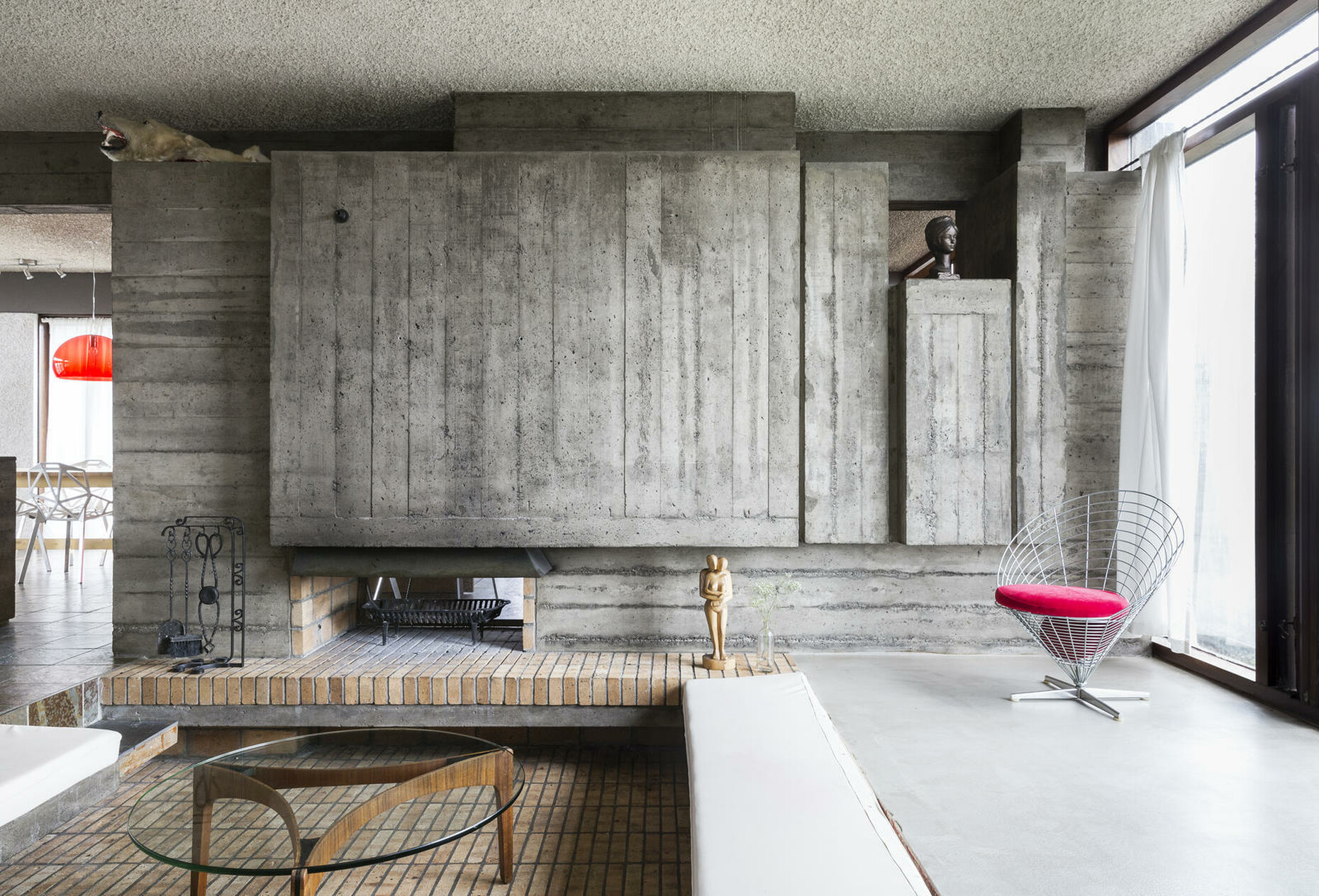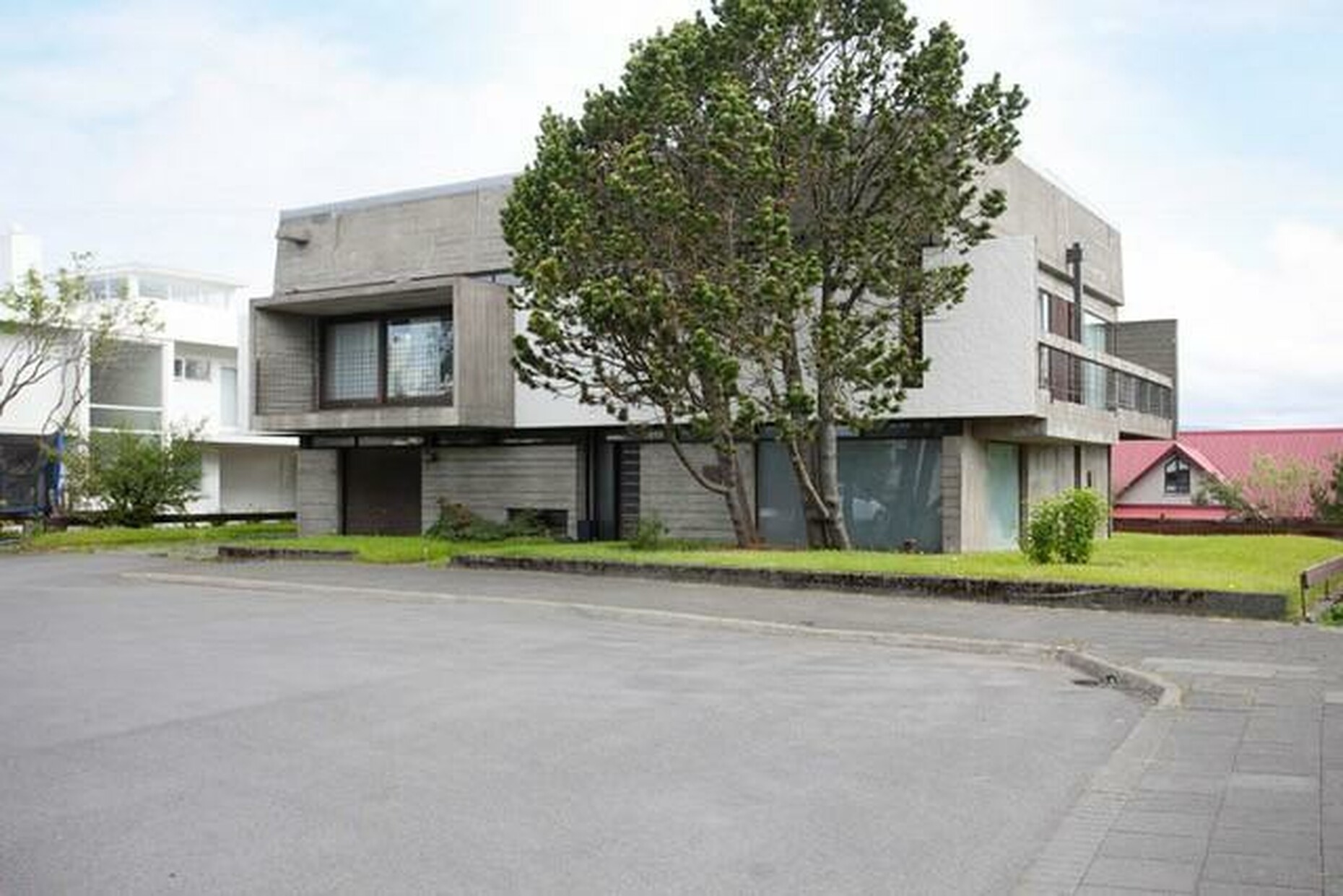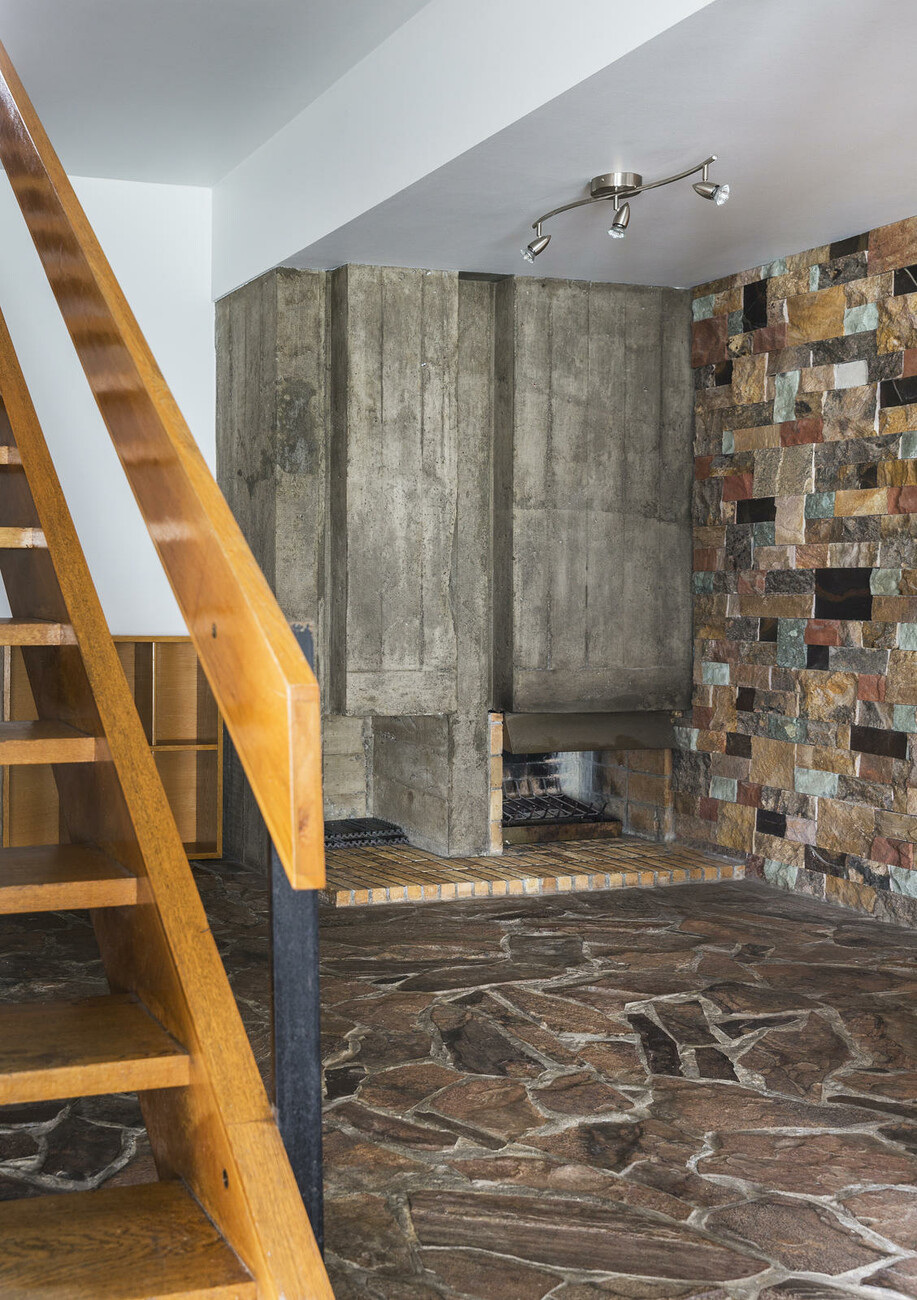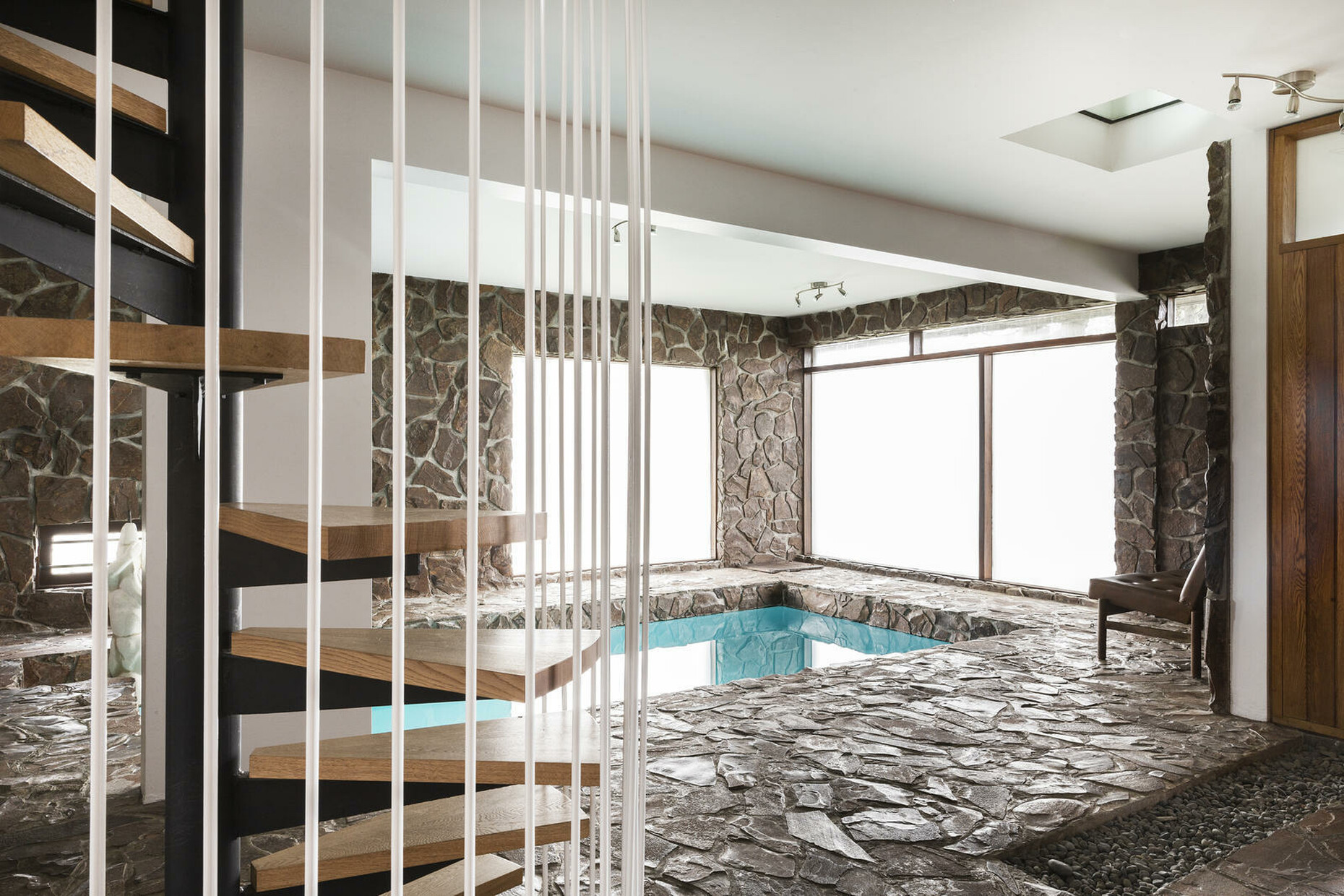Béton brut islandais
Iceland does not normally take pride of place when the discussion turns to modern architecture. That said, a Brutalist villa in Reykjavik designed by architect Högna Sigurðardóttir, who died early this year, has been attracting some attention as it is currently up for sale. Born in 1929, Sigurðardóttir studied at the Ecole des Beaux-Arts in Paris and returned to Iceland in 1960 shortly after graduating. The villa was built between 1961 and 1964 at Brekkugerði 19 and was her first design realized in her native country and simultaneously the first building in Iceland masterminded by a female architect.
The villa is, in formal terms, highly typical of its day and the French influence on its creator is clearly legible: Coarse fair-faced concrete sets the tone both inside and out. And Sigurðardóttir shaped the villa’s decorative elements, such as the monumental window frames and sills, the block-like fireplace and the benches, from concrete, firmly in the Brutalist vein. Inside the building she juxtaposed several materials to it (wood, bricks, natural stone) and thus created exciting interiors. The countless pieces of fitted furniture show clearly that for her the interior design formed an elementary part of the design. At the center of the house is a filigree spiral staircase that connects the living room and bedrooms on the upper floor to the large pool area in the ground floor. Here, the blue water exudes an almost Mediterranean feel, lending the Icelandic concrete castle a surprisingly joyful tone.











